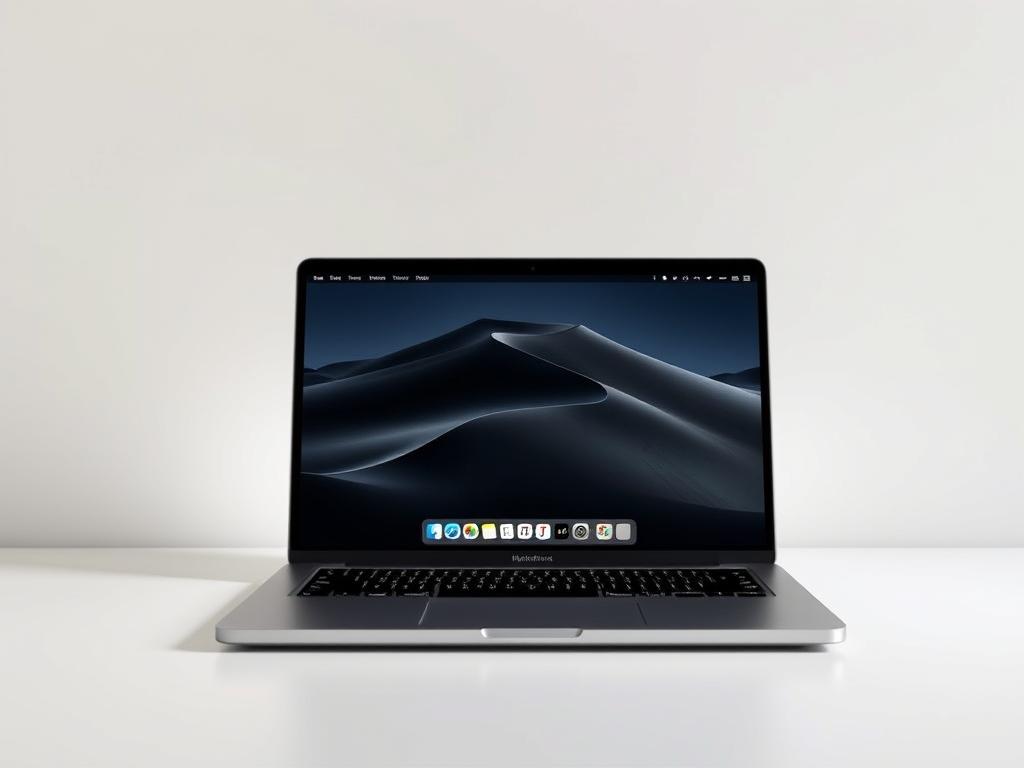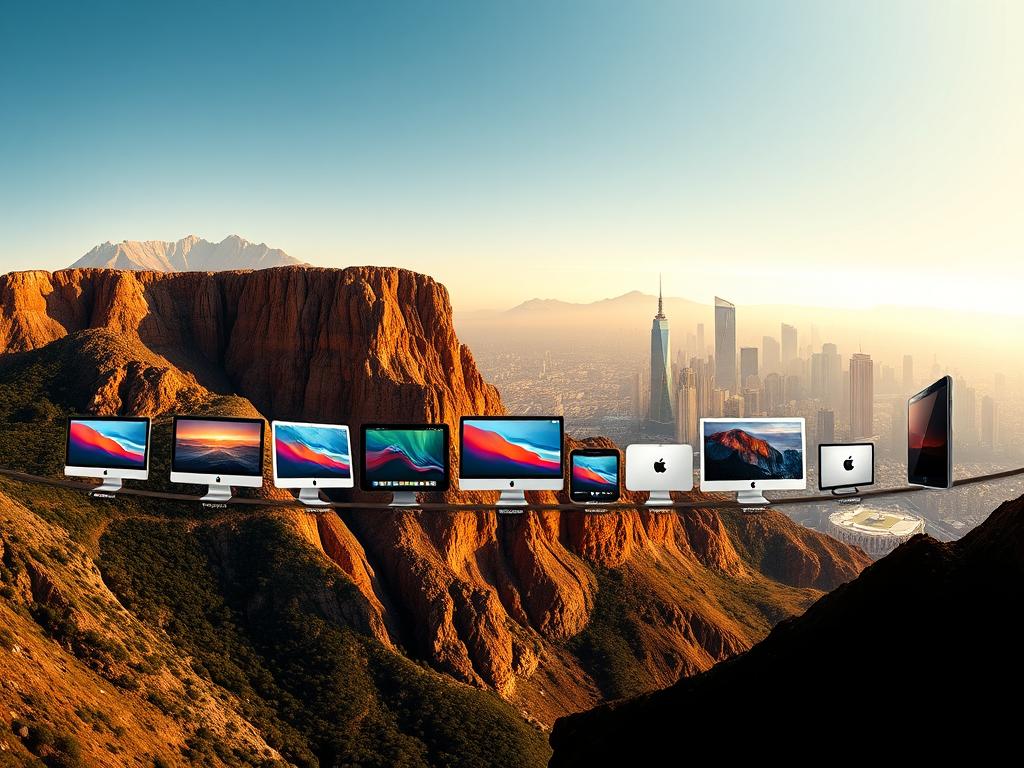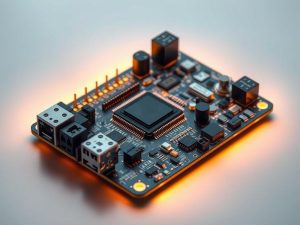Apple continues to redefine desktop computing with macOS 15 Sequoia, its 2024 flagship software. Released on September 16, this iteration builds on two decades of innovation since Mac OS X 10.0 Cheetah debuted in 2001. Modern users gain access to enhanced productivity tools and groundbreaking Apple Intelligence integration, setting new standards for creative workflows.
The evolution from 21 major versions demonstrates Apple’s commitment to refining security protocols and system efficiency. Regular updates ensure devices operate at peak performance while protecting against emerging cyber threats. With each release, compatibility improvements extend device lifespans, creating value for long-term users.
Key Takeaways
- macOS 15 Sequoia launched September 16, 2024
- 21 major updates since the original 2001 release
- Apple Intelligence integration enhances automation
- Critical security patches accompany system upgrades
- Compatibility extends to 2019+ Mac models
- Annual updates optimize hardware performance
Overview of macOS Evolution and Its Impact
Apple’s desktop environment transformed dramatically since Mac OS X’s 2001 debut. The shift from “Mac OS X” to “macOS” in 2016 unified branding across devices, creating seamless integration with iPhones and Apple Watches. This strategic rebranding mirrored technological leaps that reshaped how users interact with their devices.
The Journey from Mac OS X to macOS
Early versions introduced foundational tools still used today. Mac OS X Cheetah launched the Aqua interface, while Panther (2003) made Safari the default browser. Tiger’s Spotlight search in 2005 revolutionized file navigation. These updates established Apple’s pattern of enhancing core functionality while maintaining user familiarity.
Key Milestones and Innovations
Three breakthroughs defined macOS progress:
- Time Machine’s 2007 debut provided effortless backups
- The App Store’s 2009 arrival centralized software distribution
- Apple Silicon transition (2020) boosted performance and efficiency
Architectural shifts like 64-bit support and Metal graphics API kept Macs competitive. Recent updates focus on ecosystem integration, letting users handoff tasks between iPhones and MacBooks effortlessly. Through constant refinement, Apple balances cutting-edge features with reliable backward compatibility.
What is the latest operating system for mac computers?
September 2024 marked a pivotal moment in Apple’s software history with macOS 15 Sequoia’s debut. This version delivers smarter workflows through artificial intelligence integration, redefining expectations for desktop computing. Users gain access to tools that blend creativity with practicality, backed by Apple’s signature security standards.

Introducing macOS 15 Sequoia
Sequoia introduces Apple Intelligence, a suite of AI-powered enhancements that adapt to user behavior. The system’s Writing Tools analyze context to suggest edits, generate summaries, and refine communication styles. These features work seamlessly across apps, from email clients to design software.
Three standout capabilities transform cross-device interaction:
- iPhone Mirroring controls locked iOS devices directly from desktops
- Genmoji crafts personalized emojis using machine learning
- Image Playground generates custom visuals through text prompts
The new Passwords app replaces Keychain with encrypted credential storage accessible on all Apple devices. While compatible with Intel-based Macs from 2019 onward, M-series chips unlock full AI functionality. Automatic updates ensure users always have the latest security patches and performance tweaks.
New Features and Innovations in macOS 15 Sequoia
Apple’s 2024 update delivers groundbreaking capabilities through intelligent design and cross-device synergy. Three pillars define this release: AI-driven productivity enhancements, deeper iOS integration, and enterprise-grade security tools. These advancements cater to creative professionals and casual users alike.
Apple Intelligence and Advanced Tools
The Apple Intelligence suite transforms how users interact with their MacBook Pro and MacBook Air devices. Writing Tools analyze sentence structure in real time, offering tone adjustments and content summaries across email clients and creative apps. Visual creators gain Image Playground, which generates custom graphics from text prompts, while Genmoji crafts unique emojis reflecting personal style.
Siri’s upgraded contextual awareness handles multi-step requests like scheduling meetings while drafting responses. These features shine brightest on M-series chips, though Intel-based models from 2019 onward still benefit from core functionality.
Enhanced User Experience and iPhone Mirroring
iPhone Mirroring breaks down barriers between devices, letting users interact with locked iOS screens directly from their desktops. Respond to messages, test mobile apps, or retrieve files without touching your phone. This feature pairs seamlessly with the new Passwords app, which replaces Keychain with encrypted credential storage accessible across all Apple devices.
Performance optimizations ensure smooth operation even when running demanding apps. Whether editing 4K content on a MacBook Pro or managing workflows on a MacBook Air, Sequoia maintains Apple’s signature responsiveness while introducing transformative features.
Evolution of macOS: From Cheetah to Sequoia
Apple’s software journey spans 23 years of calculated reinvention, shaping how millions interact with technology. Starting with Mac OS X 10.0 Cheetah in 2001, the company has delivered 21 transformative versions that blend aesthetic refinement with functional breakthroughs. This progression mirrors Silicon Valley’s own evolution – from pioneering startups to AI-driven enterprises.

Major Releases and Naming Conventions
Early versions leaned on big cat monikers, establishing brand personality through names like Panther and Snow Leopard. The 2013 shift to California landmarks with OS X Mavericks signaled deeper ambitions. Iconic locations like Yosemite and macOS Ventura now represent Apple’s engineering ethos – marrying natural beauty with technical precision.
macOS Big Sur broke tradition in 2020 by jumping to version 11.0. This numbered leap coincided with Apple Silicon’s debut, proving software and hardware revolutions often align. Later releases like Monterey and High Sierra refined ecosystem integration, letting users flow between devices like rivers through canyon walls.
Annual updates follow a predictable rhythm – June previews at WWDC, autumn public releases. This cadence ensures developers and consumers alike can anticipate enhancements. For a complete timeline of versions, Apple maintains detailed archives showcasing each iteration’s unique contributions.
From Cheetah’s Aqua interface to Sequoia’s AI tools, every release builds on its predecessor while planting seeds for future growth. The naming conventions themselves tell a story – wild beginnings giving way to engineered landscapes, much like California’s own transformation.
macOS Compatibility and Supported Mac Models

Understanding hardware requirements becomes crucial when upgrading to macOS 15 Sequoia. Apple’s compatibility standards now prioritize systems with neural engines and unified memory architecture. This shift ensures cutting-edge features perform optimally while older models gradually lose support.
All M-series Macs qualify for full functionality, including:
- MacBook Air (M1 or newer)
- MacBook Pro (M1/M2/M3 generations)
- Desktop systems like iMac and Mac Studio
Intel-based systems face stricter limitations. Only select models from 2017-2020 retain basic compatibility, missing advanced tools like Apple Intelligence. This divide highlights Apple’s strategic transition to custom silicon.
“The neural engine in M-series chips unlocks capabilities Intel processors simply can’t match,” notes a senior Apple engineer. Users with supported hardware gain access to AI-powered features, while Intel Macs receive only security updates and minor improvements.
Most systems receive 7-8 years of macOS support before becoming obsolete. Check your device’s eligibility through System Settings before upgrading. Installing Sequoia on borderline-compatible hardware may reduce performance or disable key features.
For optimal results, M1 or newer MacBook Pro and MacBook Air models deliver the complete experience. Older devices still function but miss critical security patches and efficiency gains from annual updates.
Apple’s Naming Conventions and Version History for macOS
Apple’s software branding reflects its evolving philosophy across three distinct eras. The company introduced Mac OS X in 2001, using big cat names through version 10.7 Lion. This approach emphasized raw power and agility during early development stages.
Transition from “Mac OS X” to “macOS”
In 2012, Apple streamlined branding to OS X for versions 10.8-10.11. The 2016 shift to macOS with 10.12 Sierra aligned Mac software with iOS/watchOS branding. This change highlighted ecosystem integration while maintaining version continuity.
Timeline of Key Versions and Updates
Landmark releases showcase Apple’s progressive innovation:
- macOS 10.12 Sierra (2016): Siri integration debuted
- macOS 10.13 High Sierra (2017): APFS file system overhaul
- macOS 10.14 Mojave (2018): Dark Mode transformed visuals
The 2020 jump to macOS 11 Big Sur marked Apple Silicon compatibility. Each version balances aesthetic updates with under-the-hood improvements. From 10.12 Sierra’s voice commands to 10.13 High Sierra’s storage optimizations, these updates demonstrate strategic evolution.
Naming conventions now mirror California’s landscapes, symbolizing harmony between nature and technology. This approach helps users track progress while celebrating Apple’s roots in innovation-rich environments.




